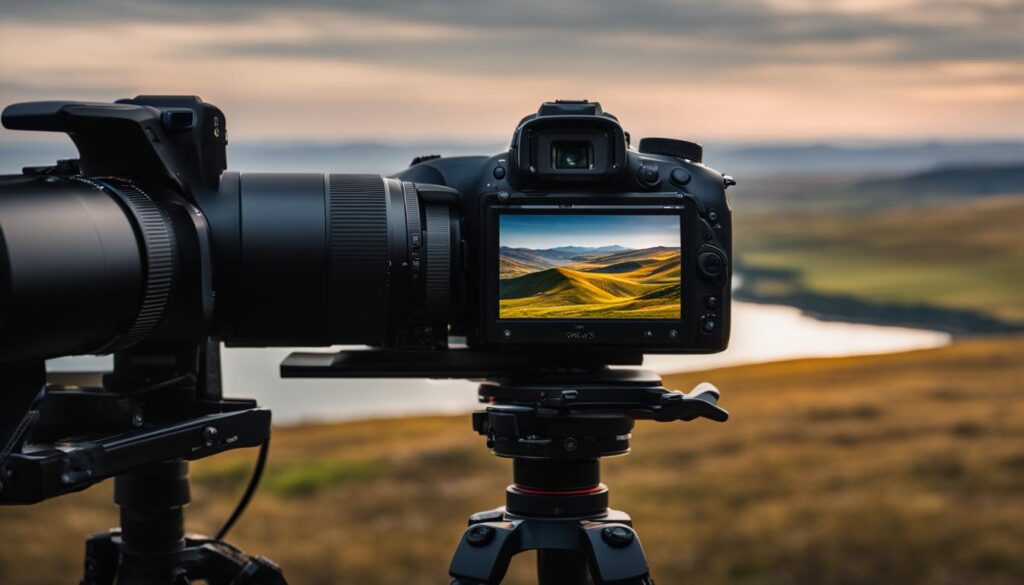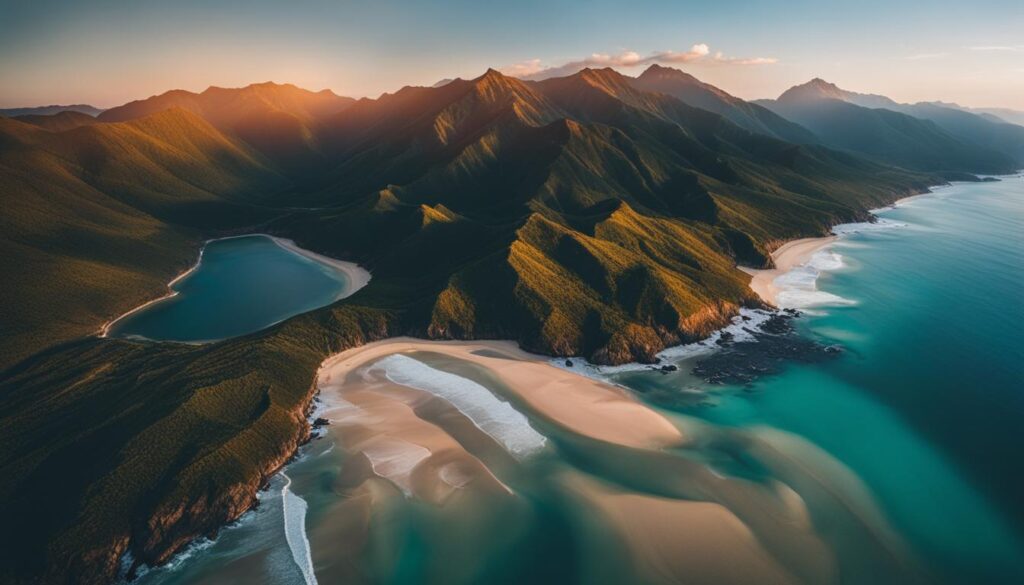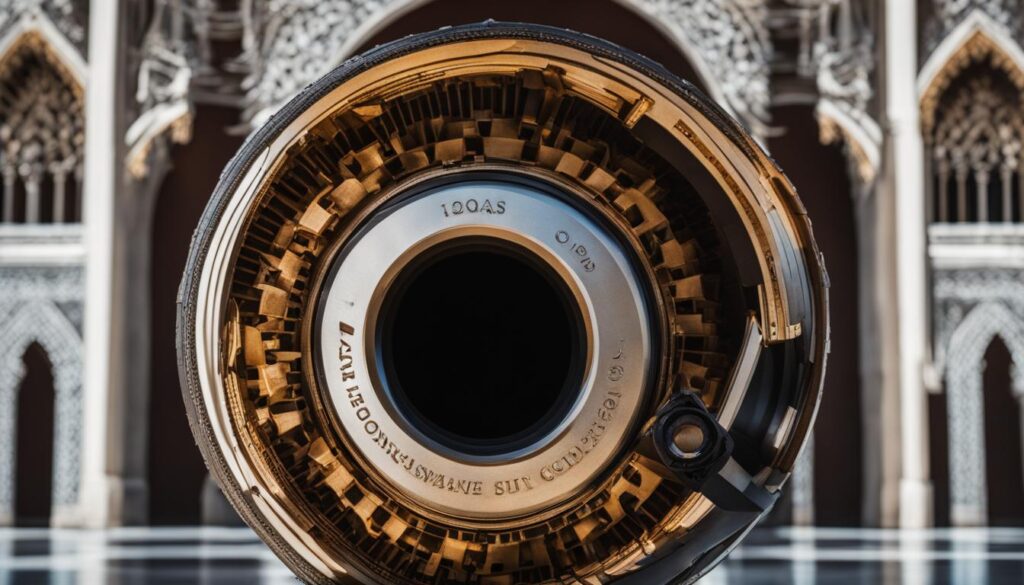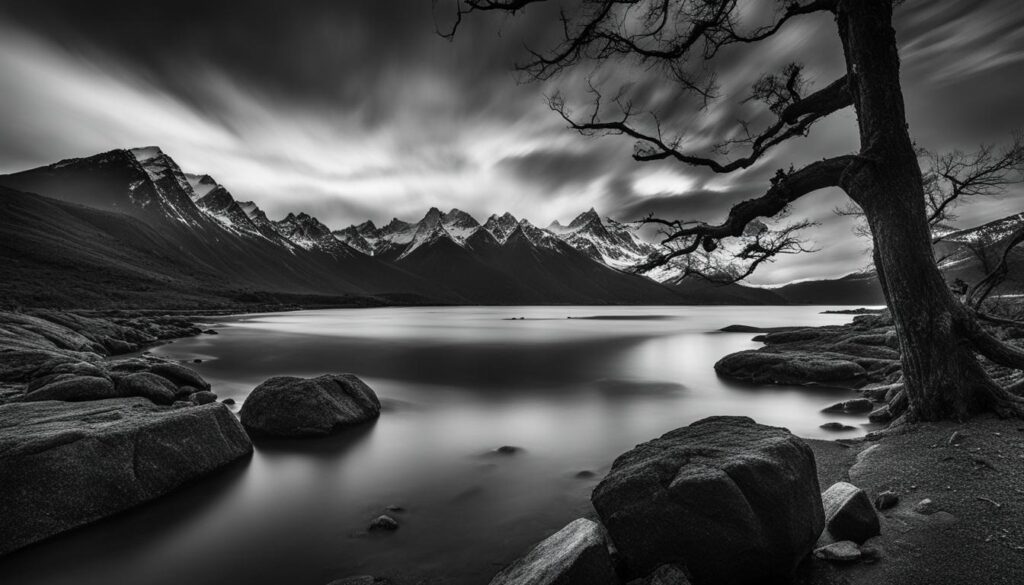We may earn money or products from the companies mentioned in this post.
If you’re new to the world of photography, understanding the basics is crucial for success. Whether you’re using a smartphone or a DSLR camera, mastering the fundamentals will help you capture stunning shots with confidence.
In this beginner-friendly camera tutorial, we’ll introduce you to the essential concepts of digital photography basics. From understanding camera settings to exploring different photography styles, this guide will equip you with the knowledge and skills necessary to elevate your photography game.
Key Takeaways:
- Learning digital photography basics is crucial for capturing stunning shots.
- Mastering camera settings such as aperture, shutter speed, and ISO can help you control exposure and depth of field.
- Composition techniques such as the rule of thirds can enhance the visual appeal of your photographs.
- Understanding lighting and exposure is crucial for well-exposed and impactful images.
- Controlling focus and depth of field can greatly enhance the impact of your images.
Understanding Camera Settings
If you’re new to photography, camera settings can seem overwhelming, but they are crucial to capturing stunning photographs. In this section, we’ll break down the essential camera settings and how they impact your images.
Aperture
Aperture refers to the opening in your camera’s lens that controls how much light enters the sensor. It’s measured in f-stops, and the lower the number, the wider the aperture. A wide aperture (low f-stop) creates a shallow depth of field, blurring the background and isolating your subject. A narrow aperture (high f-stop) keeps the entire scene in focus, useful for landscape photography.
Shutter Speed
Shutter speed is the length of time your camera’s shutter stays open, allowing light to enter the sensor. It’s measured in seconds or fractions of a second. Fast shutter speeds (1/500th of a second or higher) freeze action and are useful for sports or wildlife photography. Slow shutter speeds (30 seconds or longer) create stunning long-exposure images, commonly used for night photography or creating a silky water effect in landscape photography.
ISO
ISO refers to the sensitivity of your camera’s sensor to light. The higher the ISO, the more sensitive the sensor is, allowing you to capture images in low-light conditions. However, higher ISOs also create more digital noise in your images. To reduce noise, keep your ISO as low as possible while still capturing your desired exposure.
White Balance
White balance controls the color temperature of your photographs, ensuring they look natural and accurate. Different light sources have different color temperatures, and your camera has settings to adjust for them. For example, a daylight setting corrects for the warm tones of sunlight, while a fluorescent setting corrects for the cool tones of fluorescent lighting.
Exposure Compensation
Exposure compensation allows you to adjust the brightness of your photographs manually. If your image is too dark or too bright, you can adjust the exposure compensation to correct it. This feature is especially useful when photographing subjects with a lot of contrast, such as a backlit portrait.
Understanding camera settings is crucial for beginner photographers. Now that you’re familiar with the essential settings, experiment with them to capture stunning images and improve your photography skills.
Composition and Framing Techniques
Composition is the art of arranging elements in a photograph to create a visually appealing image. Whether you’re shooting landscapes, portraits, or any other subject, mastering composition techniques is essential for taking great photographs. Here are some beginner photography techniques for composition and framing:
- Rule of Thirds: This is a helpful guideline for composing a shot. Imagine a grid drawn on the image with two horizontal and two vertical lines, dividing the frame into thirds. Position the subject at the intersection of the lines to create a balanced and visually interesting composition.
- Framing: Use natural elements like trees, buildings, or archways to frame your subject and draw the viewer’s eye towards it.
- Leading Lines: Lines in a photograph can be used to draw the viewer’s eye towards the subject. Be mindful of lines such as roads, fences, and bridges that can lead the viewer’s eye to the main subject.
- Symmetry: Use symmetry to create balance and harmony in your photographs. Symmetrical objects create a sense of harmony and balance that can make your photograph more aesthetically pleasing.
When it comes to framing, try to avoid placing the subject directly in the center of the image. Instead, try positioning the subject slightly off-center to create a more dynamic composition. Remember, these are guidelines, not rules, and experimenting with different compositions and framing techniques can lead to unique and stunning images.
“Photography is an art of observation. It has little to do with the things you see and everything to do with the way you see them.” – Elliott Erwitt
Lighting and Exposure
Proper lighting and exposure are crucial for capturing impactful and well-exposed photographs. Understanding how different lighting conditions can affect your images will help you make necessary adjustments to your camera settings to achieve the desired effect. Here are some essential photography techniques for beginners:
Golden Hour Photography
The golden hour, also known as the magic hour, is the period shortly after sunrise or before sunset when the natural light is softer and warmer. This lighting condition creates a beautiful glow that can add depth and dimension to your photographs. During this time, you can experiment with different camera settings and angles to capture stunning shots.
High-Key and Low-Key Photography
High-key photography refers to a technique where you use bright lighting to create a soft, evenly lit image with few shadows. Low-key photography, on the other hand, uses darker lighting to create a dramatic, moody effect. These techniques are popular in portrait and fashion photography but can be adapted to other genres.
Exposure Compensation
Exposure compensation refers to adjusting the camera’s exposure values to brighten or darken the image. This technique is especially useful in challenging lighting conditions or when the camera’s automatic settings are not achieving the desired effect. You can use exposure compensation to create a more balanced exposure, emphasize certain elements of your image or create a specific mood.
Using Filters
Filters are pieces of glass or plastic that can be attached to the front of your lens to change the color, contrast, or exposure of your image. There are different types of filters available including polarizing filters, neutral density filters, and color filters. Each filter has its own unique effect and can be used creatively to achieve stunning shots.
Bracketing
Bracketing is a technique where you take multiple shots of the same subject at different exposure values. This technique is useful when you’re unsure of the right exposure or when the lighting conditions are challenging. You can then select the best shot or combine the images to create a composite with the desired exposure.
Mastering Focus and Depth of Field
One of the most critical aspects of photography is having precise control over focus and depth of field. In this section, we’ll explore some essential techniques for achieving sharp focus and controlling depth of field in your images.
1. Focus Techniques
When it comes to achieving sharp focus, it’s crucial to understand the different focus modes available on your camera.
- Single-point autofocus: This mode allows you to select a single autofocus point and adjust it based on your subject’s position.
- Continuous autofocus: This mode allows your camera to adjust focus continuously as your subject moves.
- Manual focus: This mode allows you to have complete control over focus by manually adjusting the focus ring on your lens.
Experiment with each of these focus modes to determine which one works best for your needs.
2. Depth of Field Techniques
The depth of field refers to the portion of your image that appears in sharp focus. By controlling the depth of field, you can create images with either a narrow or wide range of focus.
Here are some techniques for controlling the depth of field in your images:
- Aperture: The aperture refers to the size of the opening in your lens that allows light to enter. A wider aperture (lower f-stop number) produces a shallower depth of field, while a smaller aperture (higher f-stop) produces a wider depth of field.
- Distance to subject: The closer you are to your subject, the shallower the depth of field will be.
- Focal length: The longer your lens’s focal length, the shallower the depth of field will be.
Use these techniques to experiment with different depth of field effects and create visually compelling images.
Exploring Different Photography Styles
As a beginner photographer, exploring different photography styles can help you identify what type of photography you enjoy the most. It can also help you discover new techniques and perspectives to apply to your own style.
Landscape Photography
Landscape photography involves capturing the beauty of natural scenery, such as mountains, rivers, and forests. To excel in this photography style, you need to have a good understanding of composition and lighting. A wide-angle lens is commonly used to capture vast landscapes effectively.
Portrait Photography
Portrait photography involves capturing the personality and essence of an individual or group of people. Composition and lighting are crucial in portrait photography. Understanding how to pose your subject and use various lighting techniques can help you create stunning portraits.
Street Photography
Street photography is all about capturing candid moments of everyday life in public places, such as streets, parks, or markets. To excel in street photography, you need to have quick reflexes and a keen eye for capturing moments of human interaction.
Macro Photography
Macro photography involves capturing small objects or living creatures, such as flowers, insects, and animals, in great detail. To excel in macro photography, you need to have a good understanding of depth of field and lighting. A macro lens is commonly used to capture the tiniest of details.
Exploring different photography styles can help you develop your own unique vision and style as a photographer. Take the time to experiment with different techniques and styles to discover what works best for you.
Photography Tips for Beginners
Now that you’ve mastered the basics of digital photography, it’s time to put your skills into practice. Here are some essential photography tips to keep in mind as you venture out:
1. Experiment with different camera settings
Don’t be afraid to try different camera settings and see how they affect your images. Play around with aperture, shutter speed, and ISO to create different effects and moods. Practicing with various camera settings will help you develop your own unique photography style.
2. Pay attention to lighting
Lighting can make or break a photograph. Always consider the lighting conditions when you’re composing your shots. Pay attention to the direction and quality of light and adjust your camera settings accordingly. Natural light can create beautiful and moody photos, while artificial lighting can produce dramatic effects.
3. Frame your shots creatively
Think outside the box when framing your shots. Use different angles, perspectives, and framing techniques to add depth and interest to your images. Incorporate leading lines, patterns, and textures to create visually compelling compositions.
4. Practice regularly
The only way to improve your photography skills is to practice regularly. Take your camera with you wherever you go and capture different scenes and subjects. Don’t be afraid to experiment with different techniques and styles. The more you practice, the more comfortable you’ll become with your camera.
5. Learn from other photographers
One of the best ways to improve your photography skills is to learn from other photographers. Follow their work on social media, attend photography workshops and events, and connect with other photography enthusiasts. Learning from others can give you a fresh perspective and new ideas for your own photography.
Remember, photography is a journey that requires dedication, practice, and creativity. With these essential tips and the knowledge you’ve gained from our digital photography basics guide, you’re ready to take your photography skills to the next level. Happy shooting!
FAQ
What is digital photography?
Digital photography is the process of capturing images using a digital camera that stores the photos electronically as digital files. It has revolutionized photography by eliminating the need for film and allowing for instant viewing and sharing of images.
What are some essential digital photography basics for beginners?
Some essential digital photography basics for beginners include understanding camera settings, composition techniques, lighting and exposure, focus and depth of field, and exploring different photography styles.
What are camera settings?
Camera settings refer to the various options and controls on a digital camera that allow photographers to adjust and control aspects such as aperture, shutter speed, ISO, white balance, and more, to achieve the desired exposure and creative effects.
How can I improve my composition and framing skills?
Improving composition and framing skills involves understanding and applying composition rules such as the rule of thirds, leading lines, balance, and framing techniques. It also requires practicing and experimenting to develop your eye for capturing aesthetically pleasing shots.
What is the role of lighting and exposure in photography?
Lighting and exposure play a crucial role in photography as they determine how well-lit and exposed your images are. Understanding different lighting conditions and adjusting your camera settings accordingly can enhance the mood, depth, and details in your photographs.
How can I achieve sharp focus and control depth of field?
Achieving sharp focus involves using autofocus or manual focus techniques, ensuring proper distance to the subject, and using the appropriate focus points. Controlling depth of field can be achieved by adjusting the aperture value to create a shallow or wide depth of field effect.
What are some popular photography styles?
Popular photography styles include landscape photography, portrait photography, street photography, macro photography, and many more. Each style has its unique characteristics and techniques that can be explored and mastered.
Affiliate Disclosure: This post may contain affiliate links. If you purchase through our link, we may receive a small commission, but at no additional cost to you. For more information, please see our Disclosure statement.



